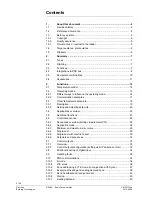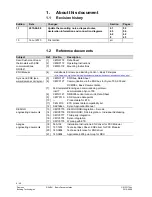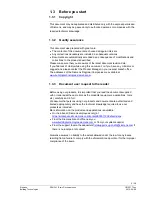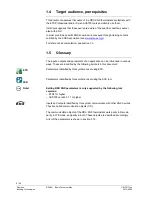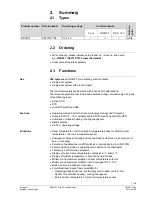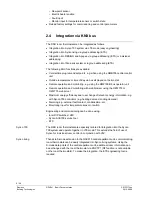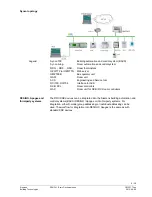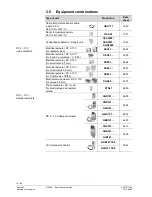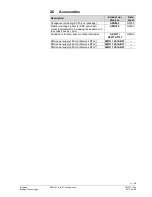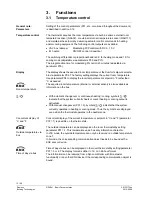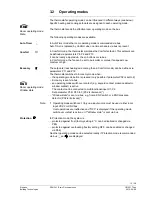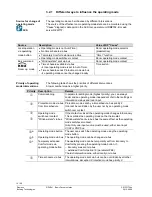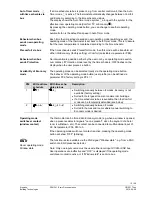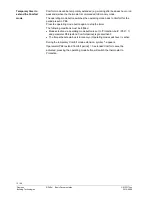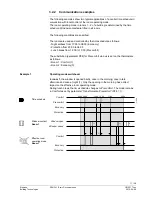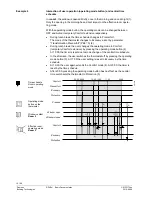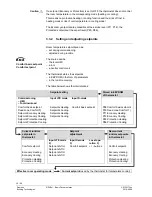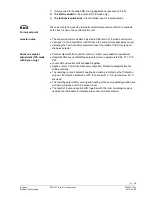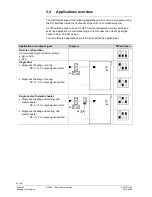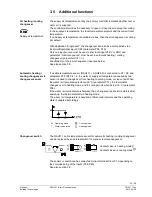
8 / 68
Siemens
RDU341 Basic Documentation
CE1P3172en
Building Technologies
2015-06-08
– Dew point sensor
– Electric heater enable
– Fault input
– Monitor input for temperature sensor or switch state
·
Reload factory settings for commissioning and control parameters
2.4 Integration via KNX bus
The RDU room thermostats can be integrated as follows:
·
Integration into Synco 700 system via LTE mode (easy engineering)
·
Integration into Synco living via group addressing (ETS)
·
Integration into DESIGO and Apogee via group addressing (ETS) or individual
addressing
·
Integration into third-party systems via group addressing (ETS)
The following KNX functions are available:
·
Central time program and setpoints, e.g. when using the RMB795 central control
unit
·
Outside temperature or time of day via bus displayed on thermostat
·
Remote operation and monitoring, e.g. using the RMZ792-B bus operator unit
·
Remote operation and monitoring with web browser using the OZW772 or
OZW775 web server
·
Maximum energy efficiency due to exchange of relevant energy information, e.g.
with Synco 700 controllers (e.g. heating demand, cooling demand)
·
Alarming, e.g. external fault contact, condensation, etc.
·
Monitoring input for temperature sensor or switch
Engineering and commissioning can be done using…
– local DIP switches / HMI
– Synco ACS700 service tool
– ETS
The RDU room thermostats are especially tailored for integration into the Synco
700 system and operate together in LTE mode. This extends the field of use of
Synco for individual room control in conjunction with VAV.
Thanks to S-mode extension to the QAX910 central apartment unit, communicating
room thermostats can be easily integrated into Synco living systems. Using the
S-mode data points of the central apartment unit, additional room information can
be exchanged with the room thermostat via KNX TP1 (RF function is not available
on the room thermostats). To make the integration, the ETS engineering tool is
required.
Synco 700
Synco living


